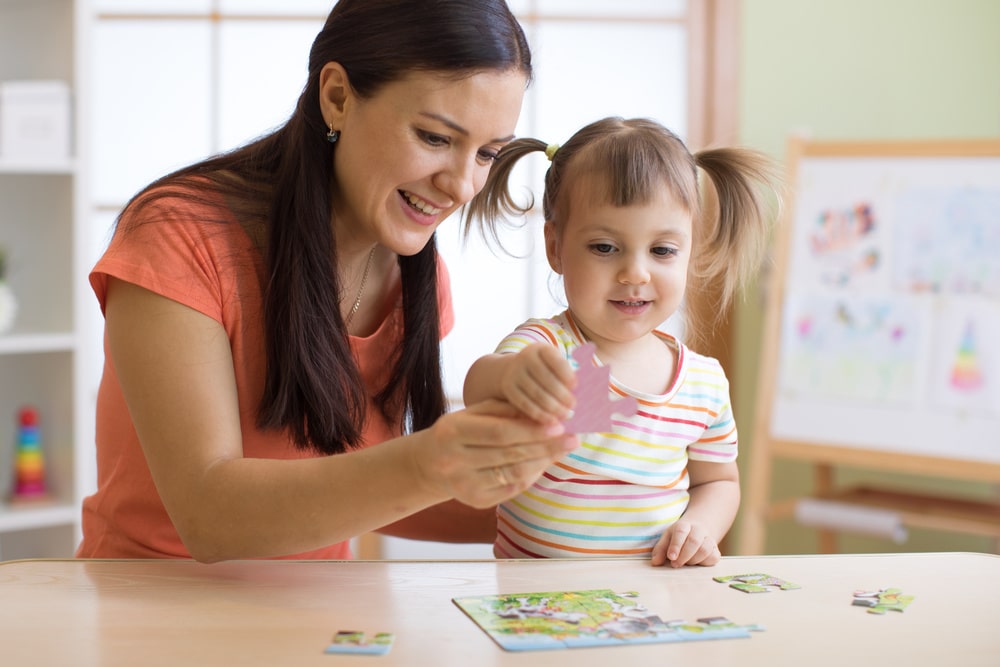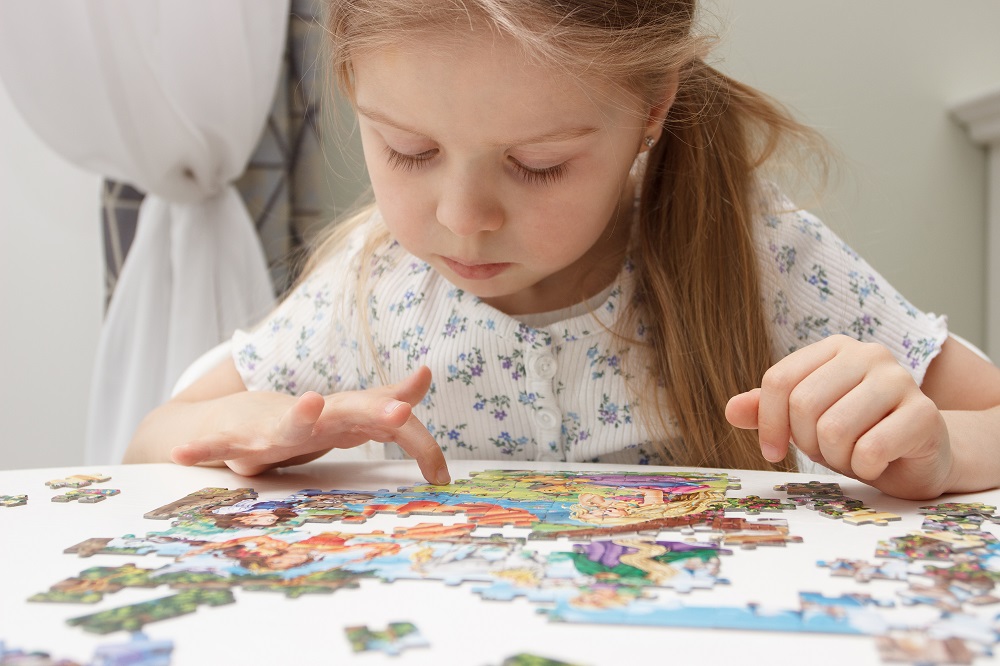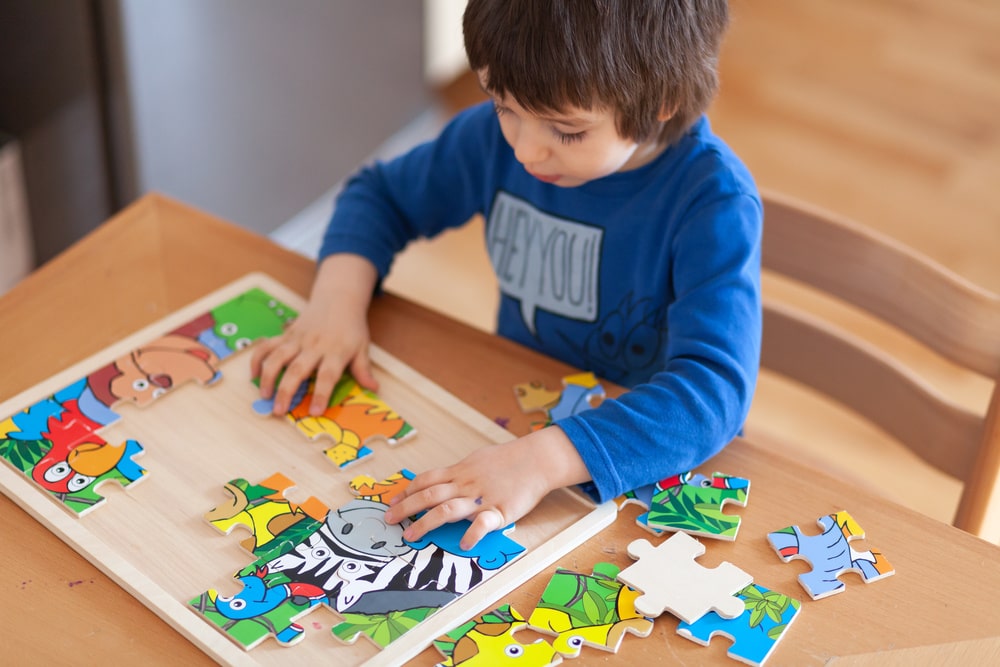Before phones and tablets came into the scene, children played with toys they could touch and toss without much fear of breaking them. One favorite toy loved by people of all ages is the jigsaw puzzle. All you have to do is connect all the pieces, and you’ll get an image as a result of your patience and hard work. In recent years, several puzzle toys for children evolved from classic jigsaws to 3D ones.
Putting together a puzzle can be a favorite pastime for many individuals. But for kids, it can be a beneficial activity for their development. Puzzles are excellent teaching tools for children as young as six months old and beyond. Thus, introducing an age-appropriate puzzle to your child can do them much good even before they start school. With that being said, here’s how puzzle play supports and benefits your kid’s cognitive development.
1. Enhances Problem-Solving Abilities
In essence, an unsolved puzzle is a problem the player needs to decipher. Even babies playing with knob puzzles featuring large, simple shapes must think of where and how to fit each piece. That’s the beauty of this classic toy. A child must use their brain and senses of touch and sight to solve the problem before them. Only then will they be able to complete the puzzle.
Parents have no reason not to get puzzles for their children. You can find them in stores like Puzzle Warehouse, which offers the largest selection of jigsaw puzzles. Or, you could buy secondhand ones from thrift shops and garage sales. They’re fantastic toys to introduce to your baby or toddler to make them smarter kids as they grow up.
2. Teaches New Vocabulary
Puzzle play allows children to widen their vocabulary in a subtle yet fun manner. Young kids, especially babies and toddlers, still need adult supervision while finishing puzzles. This situation can be the perfect opportunity to introduce new words to them.
When guiding your child, you’ll give them instructions like ‘flip’ or ‘turn,’ which some young children may have yet to hear. Kids will also learn directions such as ‘above’ and ‘below’ and sequence words like ‘first’ and ‘last’ through puzzle play.
Language learning begins early in a child’s life, and a puzzle is one tool you can use for teaching that at home. If you’re in a bilingual household, completing a puzzle with your child as you talk to them in either language helps them absorb more words, corresponding gestures, and new concepts.
3. Improves Motor Skills

While they’re still young, children are encouraged to play games like catch and tag to improve their motor development. Playing with puzzles isn’t physically draining, but it’s ideal for teaching hand-eye coordination. It’s a trial-and-error game where it’s normal to put the pieces in the wrong places and adjust accordingly. The more your child plays, the more coordinated their hand and eye movements become. Check out the best kids toys that can help improve children’s motor skills.
Puzzle play is one of the best methods to improve a child’s fine and gross motor skills. Jigsaw puzzles require a child to carefully pick up small pieces and fit them in the right spots. On the other hand, floor puzzles need kids to crawl, stretch or move around. The exercise helps build the muscles of the hands and the whole body, which is vital for a growing child.
If your child is on the autism spectrum, puzzle play could also benefit them since it will provide them with sensory and visual stimulation. Many kids with developmental delays enjoy games and toys involving pictures since they usually think in pictures than words. Playtime with puzzles gives them much-need practice on their hand-eye coordination while having fun.
4. Improves Attention Span
Children’s short attention spans are one of the banes of many parents worldwide. But if you let your child play with a puzzle, they’re likely to develop a better focus on other activities, too. Kids must sit down for an extended time when solving a jigsaw puzzle. Hence, your child may spend hours finishing their puzzle quietly and attentively instead of doing several things at once.
Parents with hyperactive kids may benefit from letting them complete puzzles. Puzzle play will let children settle down for a few minutes. They’ll focus on looking for specific colors and patterns as they play. In turn, they may also release any feelings of stress and anxiety, helping themselves relax in the process.
5. Encourages Task Completion

Some children give up easily if they find a task too difficult to complete. It could be because they need to see the possible result as worthwhile. However, jigsaw puzzles will always show an image upon completion. And when a child knows what the completed puzzle should look like, they may stop at nothing to see it for themselves.
Puzzle play encourages kids to persevere and, above all, be patient. All puzzles have a fixed goal, unlike building blocks. A child usually wants to see that end goal come to fruition, and they get excited when it does. So, they’ll do what it takes to finish it. That learned determination will carry over outside the home and help children succeed at school and other activities.
Every Piece Is Important
A puzzle is a great toy to keep a child busy, but it’s also an ideal tool to support their cognitive and physical development. With so many puzzles of various sizes available, your kid will have endless fun solving and completing one set after another. Meanwhile, they don’t realize how much it’s helping them make better sense of their big, wide world.
But how do you know the best puzzle for your child? Choosing age-appropriate puzzles for children is crucial for fostering both enjoyment and cognitive development. Tailor puzzle selection to a child’s developmental stage: toddlers benefit from puzzles with large, sturdy pieces and simple shapes, while preschoolers engage well with larger pieces and familiar themes. Early elementary children can tackle more complex puzzles, promoting basic problem-solving skills.
Consider puzzle types wisely. Wooden puzzles with sizable, durable pieces suit younger kids, while jigsaw puzzles can be introduced gradually with increasing complexity. 3D puzzles appeal to older kids seeking three-dimensional challenges.
Educational value is key. Look for puzzles that enhance cognitive skills, spatial awareness, and problem-solving, incorporating letters, numbers, or shapes for added educational benefits—themed puzzles aligning with a child’s interests, whether animals or favorite characters, enhance engagement.
Involve the child in the decision-making process, considering their preferences and abilities. Ensure safety with age-appropriate pieces and non-toxic materials, especially for toddlers. Gradual progression is essential—start with simpler puzzles and increase complexity as the child develops skills and confidence. This thoughtful approach ensures that chosen puzzles cater to age appropriateness, enjoyment, and the child’s holistic development.

